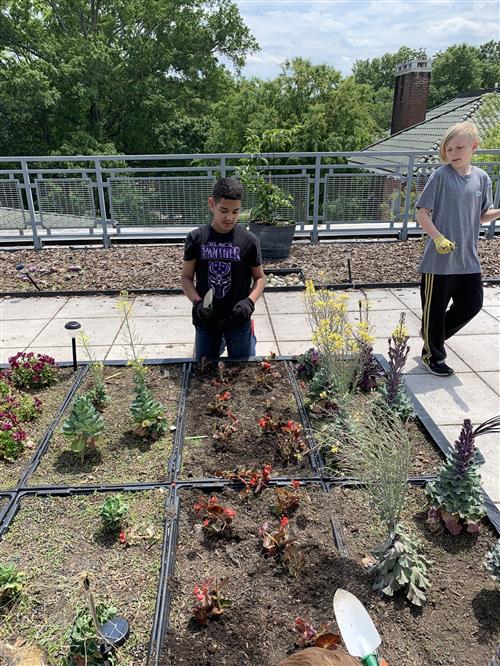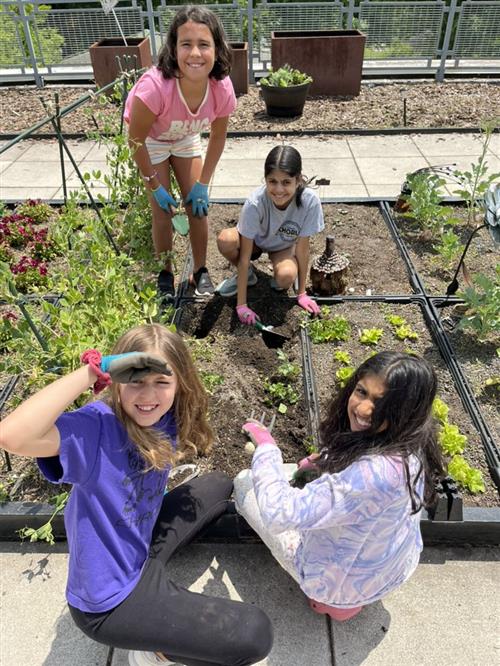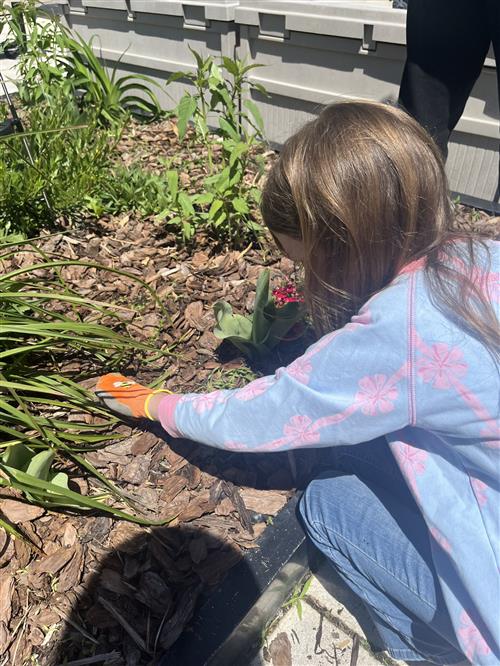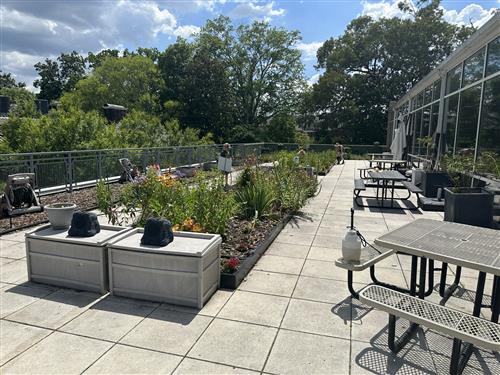- Springdale Park Elementary School
- Rooftop Garden
Rooftop Garden
-
History
Springdale Park Elementary (SPARK) is part of Atlanta Public Schools. In 2009, it opened with 365 students and was the first “green school” in Georgia receiving gold certification from LEED (Leadership in Energy and Environmental Design). Springdale Park embodies two historic Druid Hills buildings, the Hirsh Mansion, and the Rutland Building, which is connected to a new, modern building on the back of the property complete with rooftop garden. SPARK embodies environmental responsibility- in everything from the construction of the school to classroom learning. Students participate in recycling and composting, as well as giving back to the community. The school-wide Project Based Learning goal is to grow food to donate to local community food banks. The garden is a place where both students and teachers enjoy fresh air and music while maintaining the garden, discovering critters, and observing the cycle of life.
Tomato Garden
Fifth grade started tomatoes and sweet pepper from seed. Second and Third graders added marigold and basil while learning about pollinators and companion plants that deter pests. Before planting, third grade tested (pH, N, P, K) and amended soil with Nitrogen (blood meal), Phosphorus, and Potash recommendations that turned out to be very similar to the professional tests done by the UGA extension office in a comparison study.
Seasonal Garden
The seasonal garden flourishes with chard, radish, pansies, cabbage, brussel sprouts, sugar snap peas and broccoli all planted by students. Recent additions of begonia, squash, cucumber, zucchini, and herbs were planted by 5th grade. The 2022 December cold snap was a good learning point to study weather prediction and farming hardship. Fourth grade students designed weather protection systems to improve the sheets and rocks initially placed during the storm. Meteorologist Steve Gregg donated a weather station used to collect information while students created and recorded weather reports. An aphid infestation was another unexpected discovery which prompted 1st to control the pests eating the peas they planted earlier this year. Kindergarten conducted experiments to study ladybug behavior and eating habits to determine if SPARK should release these beneficial insects into the garden.
Pollinator Garden
K-2 grades learned about the importance of various pollinators including bees and butterflies. Highlights include learning the honeybee’s waggle dance, releasing butterflies, and collecting data in a controlled experiment to determine which flowers attracted bees. To celebrate the 100th day of school, third grade planted one hundred tulips bringing the garden to life before perennials bloomed.






